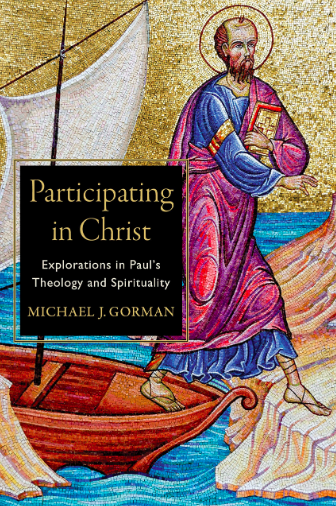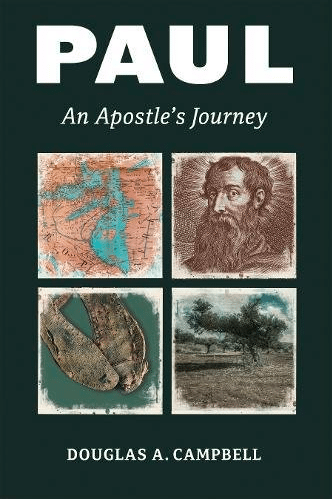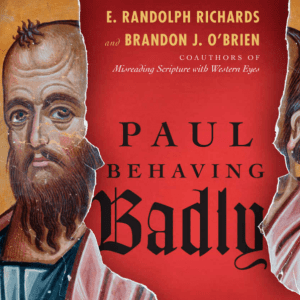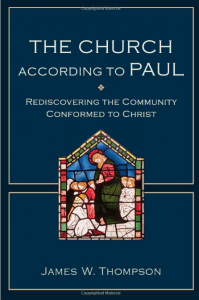As if the change to the “new” perspective wasn’t enough for some, Tom Wright began to push into new territory and he knew it wasn’t just the old “new” perspective so Tom called what he was doing the “fresh” perspective, and I want to say one bit about this “fresh” perspective to form the introduction to the last chapter in J.D.G. (Jimmy) Dunn’s newest book, Jesus, Paul, and the Gospels. In brief, I see the “fresh” perspective to be the new perspective in more political key. Tom saw the significance of empire ideology in various NT writings so he took the new perspective into a more political framing of issues: Jesus is Lord, Caesar is Not is one way Tom said it. (But you’ll have to read his book, Paul: In Fresh Perspective, to see this more completely, and we are awaiting Tom’s big volume on Paul.)
What do you see in the ekklesia as a house church? And as a fellowship? And as shaped by charisma instead of “offices” or ecclesiastical orders?
 Dunn’s last chp is about the church, and he immediately clarifies himself over against the “fresh” perspective, without as much as saying so, by saying that “ekklesia” means only a gathering or assembly, as is found more in the Old Testament (Greek, LXX), and not so much a political assembly, as is found in the fresh perspective. Thus, Dunn thinks the term is more theological than political. [Two points: 1. The term qahal, in the Hebrew OT, cannot lose its political sense since it is Israel as the people of God, governed by kings, etc. 2. The NT ekklesia deserves to be seen as having impact from Jesus’ use of kingdom, which has political force too, so I’m not sure ekklesia can ever lose its political sense. The issue is if Paul had a conscious over-againstness when he used the term ekklesia.]
Dunn’s last chp is about the church, and he immediately clarifies himself over against the “fresh” perspective, without as much as saying so, by saying that “ekklesia” means only a gathering or assembly, as is found more in the Old Testament (Greek, LXX), and not so much a political assembly, as is found in the fresh perspective. Thus, Dunn thinks the term is more theological than political. [Two points: 1. The term qahal, in the Hebrew OT, cannot lose its political sense since it is Israel as the people of God, governed by kings, etc. 2. The NT ekklesia deserves to be seen as having impact from Jesus’ use of kingdom, which has political force too, so I’m not sure ekklesia can ever lose its political sense. The issue is if Paul had a conscious over-againstness when he used the term ekklesia.]
A church in most of Paul’s writings was a “local church” and only later did “church” begin to signify the church universal; a church was not a building, but a gathering of people into a house church. Most churches were probably in a multi-story tenement block (called insulae), and it also likely that most church gatherings were about a dozen people, unless the people gathered to a villa. So, for example, Romans 16:23 were the whole church of Corinth in his villa. In such cases about 50 people could gather together. [Now there are some who say we need to have more house churches, and some use this kind of information to point long fingers are megachurches, but the social realities of the 1st Century and the 21st Century are not the same and one can’t find any text that says “keep your church to 15 or 25, or at most 50.” So, let’s be wise.]For Paul the individual believer is “in Christ” and those believers form the “body of Christ” (1 Cor 12:12, 27). Again, and here the “fresh” perspective could have been addressed, the term “body” was often used for political bodies in the Aegean. It’s about unity with diversity, one person doing one thing and another something else but coordinating the way a body does.
This new political body is defined by Christ, not by nationality or geography or by social standing or by gender.
Thus, Paul’s ecclesiology is trinitarian: Father (calling), Son (in Christ), and Spirit. The Spirit is at work to produce fellowship (koinonia) and charisma (giftedness). This koinonia is not just with one another but is first with the Spirit and out of that shared experience of the Spirit the shared life of the believers emerges. The gifts bring grace into concrete manifestations. And Paul is not a hierarchicalist, as so many today are (pushing hard for more authority in a pastor), but believes in Spirit guidance through koinonia and charisma. So “church” does not mean eccleasitical leaders but the Spirit breaking forth.











